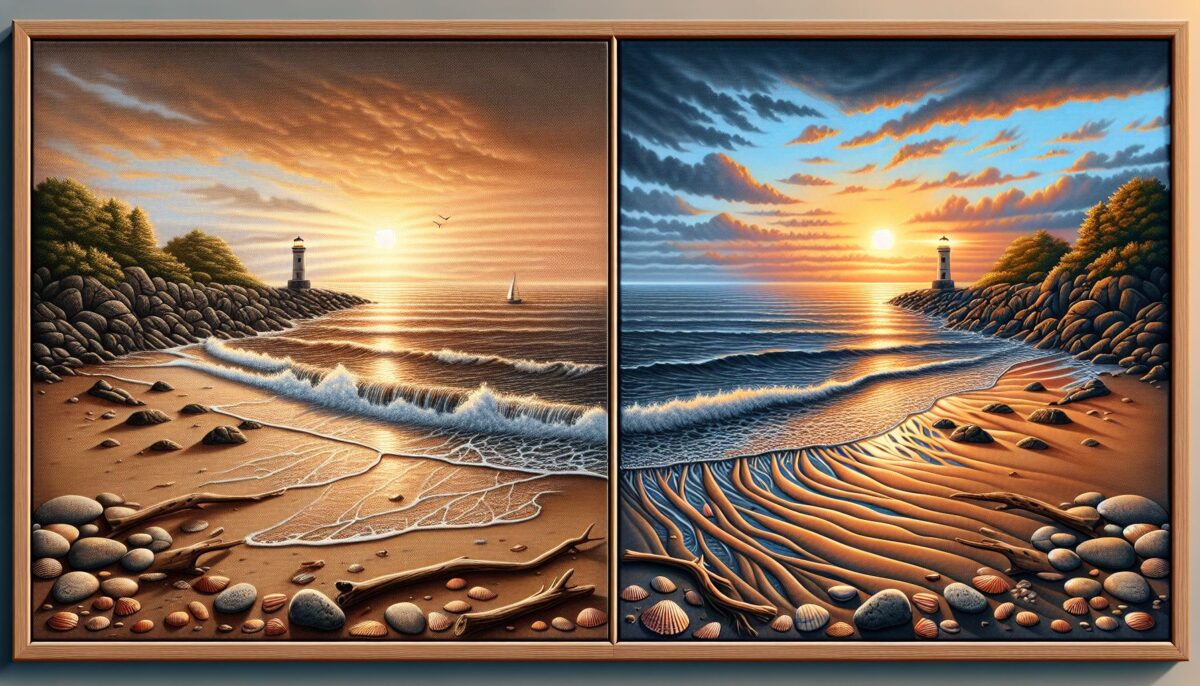The tidal rhythm of the sea, its incessant ebb and flow, is a complex and intriguing phenomenon encompassing both the poetry of the cosmos and the hard reality of physics. It provides a clear example of the delicate balance between heavenly bodies and earthly matter.
The tides have shaped our planet’s coasts, sculpted its seafloors, and influenced its marine life. They play a pivotal role in various human activities, from fishing to shipping, and from power generation to recreation.
Understanding the Tides
Geographer George Darwin once said, “Tides are the lung of the ocean, its respiratory system.”[^1^] What did he mean by this? Essentially, the tides and currents serve as a ventilating system for the ocean, moving water in and out and, in the process, delivering nutrients, oxygen, and life to diverse places.
What Causes the Tides?
The tides are caused by the gravitational forces exerted by the moon and, to a lesser extent, the sun on Earth’s oceans.
As the moon orbits our planet, its gravitational pull tugs on the ocean’s water, creating a bulge or high tide in the water beneath it. At the same time, an identical bulge arises on the opposite side of Earth due to the centrifugal force initiated by our planet’s rotation. The areas between these bulges experience low tide.
Twice a day, as Earth rotates, any given location will pass through both the high and low tide zones, hence the term semidiurnal tides.[^2^]
Tides Variations
Over the course of a lunar month, solar gravitational forces also come into play, reinforcing or diminishing the moon’s impact and leading to so-called spring and neap tides. During full and new moons, the sun, moon, and Earth align, leading to stronger gravitational pull and higher tides (spring tides). Conversely, during the quarter moons, when these bodies form a right angle, the sun’s gravity partially counters the moon’s, leading to lower tides (neap tides).
Influence of Tides on Marine Life and Ecosystems
A well-oiled global engine, the tide has vast implications for marine life, including the lives of microorganisms, plants, and animals such as mollusks, birds, fish, and even large marine mammals.
Plankton and Tidal Currents
Plankton, microscopic organisms that float in seawater, are at the base of marine food chains. Tidal currents can carry these tiny life forms from their breeding grounds in shallow waters to open sea, where they can be widely disbursed.
Birds and Tides
Many bird species live by the rhythm of the tide, feeding on the bounty it exposes when it recedes. Sandpipers, oystercatchers, and herons are among the many species that forage for worms, mollusks, crabs, and other critters during low tide.
Mammal Behavior and Tides
Marine mammals, such as seals and sea lions, often rest and give birth on rocky outcrops and beaches revealed by low tides.
Impact of Tides on Human Activities
Tides significantly impact human activities. These influences span from commerce and navigation to the future of renewable energy and the shape of our coasts.
Tides and Fishing
Tides play a crucial role in fishing. Many marine species, especially fish, move according to the tide, enabling fishermen to predict their behavior and maximize their catch.
Tidal Energy
As we look for ways to transition away from fossil fuels, tidal energy – an unlimited, predictable, and clean source – shows great promise.[^3^] Tidal energy technologies rely on the ebb and flow of the tides or their kinetic energy to generate electricity.
Coastal Shaping
The relentless movement of the tides shapes our coasts, influencing their erosion, deposition, and overall landscape. Beaches, deltas, estuaries, bays – all owe their appearance and evolution to the power and rhythm of the tides.
Conclusion
Understanding the natural rhythm of our Earth is vital, as we continue to rely on and interact with our environment. The tide, undiscriminating in its continual movement, is a robust reminder of the cosmos’s concrete impact on our world and our lives.
A better understanding of tides can help us protect our delicate coastlines, responsibly exploit marine resources such as fishing and tidal energy, and ensure safe navigation for ships. Most importantly, studying the tides can help us appreciate the intricate beauty and fragility of our wonderful planet.
[^1^]: ‘Tides’ | National Oceanic and Atmospheric Administration
[^2^]: University of Southamp – ‘Introduction to Tides’
[^3^]: Energy.gov – AWEA Windpower 2015 and Wind’s Revolutionary Growth
